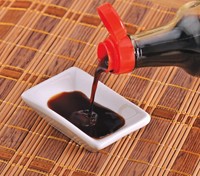Advertisement
Grab your lab coat. Let's get started
Welcome!
Welcome!
Create an account below to get 6 C&EN articles per month, receive newsletters and more - all free.
It seems this is your first time logging in online. Please enter the following information to continue.
As an ACS member you automatically get access to this site. All we need is few more details to create your reading experience.
Not you? Sign in with a different account.
Not you? Sign in with a different account.
ERROR 1
ERROR 1
ERROR 2
ERROR 2
ERROR 2
ERROR 2
ERROR 2
Password and Confirm password must match.
If you have an ACS member number, please enter it here so we can link this account to your membership. (optional)
ERROR 2
ACS values your privacy. By submitting your information, you are gaining access to C&EN and subscribing to our weekly newsletter. We use the information you provide to make your reading experience better, and we will never sell your data to third party members.
Environment
USDA Lab Named Landmark
ACS honors Western Regional Research Center again, this time for contributions to flavor chemistry
by Elizabeth K. Wilson
April 28, 2014
| A version of this story appeared in
Volume 92, Issue 17

During World War II, food scientists at the Western Regional Research Center (WRRC) in Albany, Calif., were busy developing freezing and dehydrating methods for preserving foods. Ultimately, the need to preserve not only the food but also the flavor became a paramount goal.
Thanks to more than 60 years of research on flavor, we now know which compounds make an orange taste like an orange or rice taste like rice. We understand how they can be affected by processing and storage.
Much of this flavor knowledge comes from research performed at WRRC, which is run by the Department of Agriculture’s Agricultural Research Service.
And so during a ceremony on Aug. 29, 2013, at WRRC, the American Chemical Society designated the facility a National Historic Chemical Landmark for its pioneering research in the chemistry of flavor.
This is the second time WRRC has been designated an ACS chemical landmark: In 2002, the facility was honored for its research advances in frozen-food technology (C&EN, Jan. 13, 2003, page 43).
As the only facility to receive two such awards, “this is a unique testament to WRRC’s outstanding research,” 2013 ACS President Marinda Li Wu said at last year’s ceremony.
The flavor compound research has made it possible for frozen strawberries to taste fresh, for jelly beans to mimic flavors of a wide variety of foods, and for scientists to understand components of aroma and taste and learn how compounds react to preservation, Wu said. “Their work enables the widespread availability of high-quality, safe, and flavorful foods.”
At the ceremony, Wu presented Howard Q. Zhang, WRRC director, with a plaque commemorating the designation. “We’re extremely honored to be receiving such an award,” Zhang said. “I think it shows the significance of the work that has been done here in the past and that we continue to build on.”

The strawberry was the focus of WRRC’s first flavor project. In the late 1940s, flavor chemist Keene P. Dimick began devising analytical techniques to distill the flavor of strawberries into a concentrated oil. In 1953, Dimick built one of the earliest gas chromatographs, allowing researchers to separate flavor compounds. By 1956, Dimick’s team had solved the mystery of strawberry flavor: The key compound is 4-hydroxy-2,5-dimethyl-3(2H)-furanone.
In the 1960s, WRRC was one of several facilities that pioneered the coupling of gas chromatography with mass spectrometry. With the analytical power of GC/MS, researchers moved on to identifying the main source of myriad other flavors: oranges (α- and β-sinensal), bell peppers (2-isobutyl-3-methoxypyrazine), rice (2-acetyl-1-pyrroline), and more.
Not only did this knowledge satisfy chemical curiosity, but it also enabled scientists to begin investigating topics such as odor thresholds and flavor potency and their importance in processing foods.
Today, flavor chemists have identified more than 7,000 flavor and aroma compounds, and WRRC continues to explore new territory, said Tara McHugh, research leader of WRRC’s Food Processing Research Unit.
In a statement, she added, “Processed foods are an important part of the nation’s food supply, and the technology developed [at WRRC] will continue to help us ensure that the supply is safe, marketable, and of high quality and that the food tastes good to even the most discriminating palates.”




Join the conversation
Contact the reporter
Submit a Letter to the Editor for publication
Engage with us on Twitter